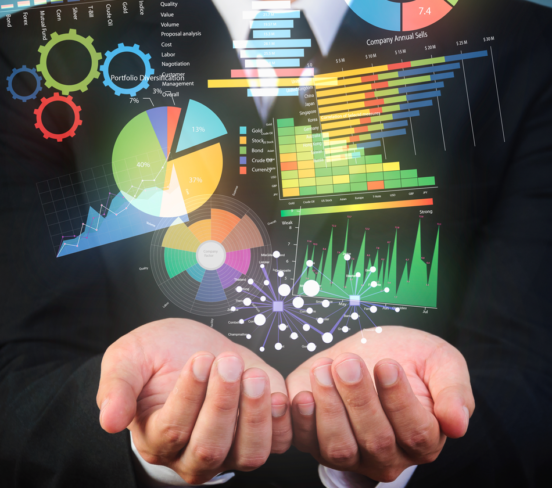Data visualization is the process of representing data in a graphical or pictorial format to help people understand complex information more easily. It enables users to identify patterns, trends, and correlations that may not be apparent when looking at raw data. This article will explore different types of data visualization, their importance, advantages, and disadvantages, and some of the tools used to create them.
Types of Data Visualization
There are several types of data visualization techniques, each with its unique strengths and weaknesses. Some of the most common types include:
Bar Charts: A bar chart is a simple way to display and compare values in different categories using vertical or horizontal bars.
Line Charts: A line chart shows trends over time by connecting data points with lines.
Scatter Plots: A scatter plot uses dots to represent data points, and the position of each dot shows the relationship between two variables.
Pie Charts: A pie chart divides a circle into slices to show the proportion of each category in the whole.
Heat Maps: A heat map shows the distribution of data using colors, with warmer colors representing higher values and cooler colors representing lower values.
Tree Maps: A tree map is a hierarchical representation of data that uses rectangles to show the size of each category.
Importance of Data Visualization
Data visualization is crucial in helping users make sense of large and complex data sets. It allows users to quickly identify patterns, trends, and relationships between different data points that would be difficult to identify by looking at raw data alone. By representing data in an intuitive way, it helps people to understand data more easily, and make informed decisions based on it.
Advantages of Data Visualization
Easy to Understand: Visualization makes it easier to understand complex data sets by representing them in a graphical format.
Better Decision Making: Data visualization enables users to identify patterns and trends that may not be immediately apparent, leading to better decision-making.
Quick Data Analysis: Visualization helps users analyze data more quickly, allowing them to make decisions in real-time.
More Engaging: Visualization is more engaging than raw data, making it more likely that users will pay attention to it and retain information.
Disadvantages of Data Visualization
Can be Misleading: Poorly designed visualizations can be misleading and may lead to incorrect conclusions.
Subjectivity: Visualization can be subjective and may depend on the person creating it.
Data Complexity: Some data sets may be too complex to represent in a simple visualization, which can lead to oversimplification.
Data Visualization Tools
There are several tools available for creating data visualizations, ranging from simple spreadsheet tools to more complex software packages. Some of the most popular tools include:
Microsoft Excel: Excel is a widely used spreadsheet tool that includes basic charting and graphing features.
Tableau: Tableau is a data visualization software that allows users to create interactive dashboards and visualizations.
D3.js: D3.js is a JavaScript library that enables users to create dynamic and interactive data visualizations.
Google Charts: Google Charts is a free tool that allows users to create simple charts and graphs.
Conclusion
Data visualization is a powerful tool that enables users to understand complex data more easily, identify patterns, and make informed decisions based on it. Different types of visualizations are suited to different types of data sets, and choosing the right one is crucial for effective communication of data. While there are some disadvantages to data visualization, the advantages outweigh them. There are several tools available for creating visualizations, ranging from simple spreadsheet tools to complex software packages. It is essential to select the right tool for the job, and to ensure that the visualization is designed effectively to avoid misleading conclusions.
To visualize means to form a mental image or to represent something, such as data or information, in a graphical or pictorial form. The purpose of visualization is often to make information easier to understand and to uncover patterns, relationships, and insights that might not be immediately apparent from the raw data. Visualization can take many forms, including charts, graphs, maps, and images, and can be used in a wide range of fields, including science, engineering, business, and the arts.
Define Visualize.
To visualize means to form a mental image or to represent something, such as data or information, in a graphical or pictorial form. The purpose of visualization is often to make information easier to understand and to uncover patterns, relationships, and insights that might not be immediately apparent from the raw data. Visualization can take many forms, including charts, graphs, maps, and images, and can be used in a wide range of fields, including science, engineering, business, and the arts.
What is Visualization?
Visualization is the process of creating a visual representation of data, information, or concepts in order to communicate information more effectively or to gain insights from the data. The visual representation can take many forms, such as charts, graphs, maps, images, and animations, and can be used for a variety of purposes, such as data analysis, data communication, and decision-making. Visualization can help to make complex information easier to understand and can highlight patterns, relationships, and trends that might not be immediately obvious in the raw data. It is widely used in fields such as science, engineering, business, medicine, and the arts.

